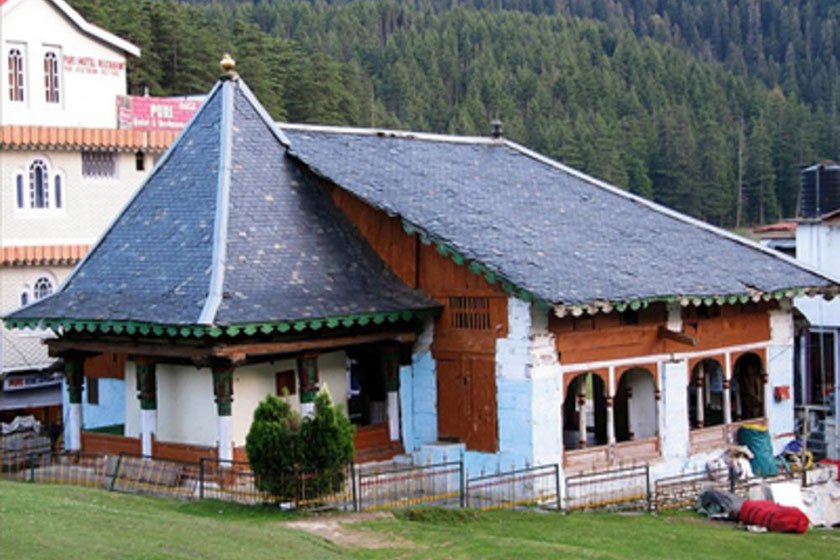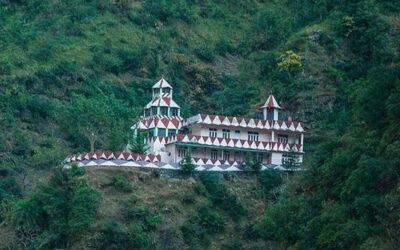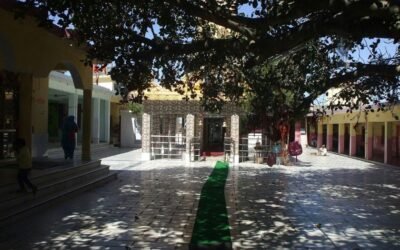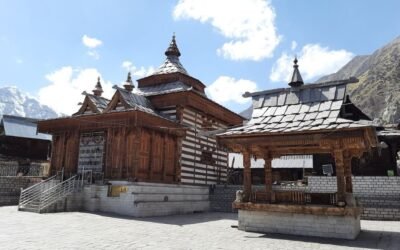Nestled beside the emerald meadows of Khajjiar Lake, the Khajji Nag Temple is one of the oldest and most revered shrines in Himachal Pradesh. Dating back to the 12th century, this temple is dedicated to Khajji Nag, the serpent deity, and is a spiritual and architectural gem that reflects the region’s deep-rooted traditions and mythological heritage.
🌄 Location & Accessibility
- Location: Khajjiar, Chamba district, Himachal Pradesh – 176314
- Altitude: ~1,920 meters above sea level
- Nearest Towns: Dalhousie (24 km), Chamba (22 km)
- How to Reach:
- By Road: Well-connected via Dalhousie–Chamba road; taxis and buses available
- By Rail: Nearest station – Pathankot (~95 km)
- By Air: Gaggal Airport, Kangra (~120 km)
🛕 Mythological Significance
The temple is named after Khajji Nag, the Lord of Serpents, and is believed to protect devotees from snakebites, misfortune, and evil spirits. According to local legend, the Pandavas visited this site during their exile, and inside the temple, you’ll find wooden carvings of the Pandavas and Kauravas playing dice, symbolizing the eternal battle between dharma and adharma.
Khajji Nag is also considered a guardian of the underworld, and worshipping him is believed to bring fertility, prosperity, and protection.
🕉️ Deity & Worship
The Khajji Nag Temple is dedicated to Khajji Nag, the Serpent God, revered as the protector against snakebites, misfortune, and hidden dangers. The sanctum houses ancient idols of serpents, along with images of Lord Shiva, Hidimba Devi, and depictions of the Pandavas and Kauravas from the Mahabharata, symbolizing the temple’s deep mythological roots.
Worship practices include offering milk, incense, red cloth, and flowers to the serpent deity, with devotees seeking protection, fertility, and good fortune. The temple is especially vibrant during Nag Panchami, when special pujas and rituals are performed to honor Khajji Nag. Traditional practices once included goat sacrifices, though these have largely faded in modern times. Pilgrims often circumambulate the temple and meditate in its cedar-shaded courtyard, invoking the serene yet powerful presence of the Nag Devta.
🏛️ Architectural Highlights
- Built in Pahari style with a golden dome and spire, earning it the nickname “Golden Devi Temple”
- A unique blend of Hindu and Mughal architecture, with intricate wooden carvings on ceilings and pillars
- The sanctum houses idols of Khajji Nag, along with Lord Shiva, Hidimba Devi, and other deities
- The Mandapam corners feature wooden sculptures of the five Pandavas
- The temple is constructed using local slate and deodar wood, showcasing traditional craftsmanship
🎉 Rituals & Festivals
- Nag Panchami (July–August): The most important festival, with special pujas, folk music, and offerings to the serpent god
- Navratri & Dussehra: Celebrated with devotion and community gatherings
- Goat Sacrifice: An ancient ritual still practiced by some devotees seeking divine intervention
🏞️ Nearby Attractions
- Khajjiar Lake: A serene lake surrounded by cedar forests and meadows
- Golden Devi Temple: A smaller shrine near the lake, often confused with Khajji Nag Temple
- Panch Pandav Tree: A unique tree with multiple trunks, linked to the Mahabharata
- Dainkund Peak & Kalatop Sanctuary: Ideal for trekking and nature walks
- Dalhousie & Chamba Town: Colonial charm and ancient temples just a short drive away
🙏 Spiritual Experience
The Khajji Nag Temple is more than a place of worship—it’s a portal into Himachal’s mythic past, where serpent lore, epic legends, and sacred nature converge. Whether you’re a pilgrim, a history lover, or a seeker of silence, this temple offers a soulful pause in the lap of the Himalayas.




